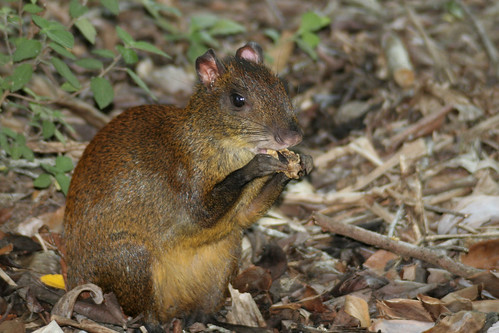Being a yoga instructor and a massage therapist at Playa Nicuesa is one in a life time experience... One of our Costarican yoga instructors, Nati Soto, shared with us her side of the story...
 |
| Snorkeling |
Living and working at Nicuesa Lodge changed my perspective on life. My expectations for this opportunity were really high, and no doubt I had the time of my life. The knowledge and the fun that I experienced there is owed to the awesome people I was so lucky to spend the time with; guests, co-workers, and the coolest managers you could ask for.
 |
| Melo, boat captain |
Looking calm and still like if the surface of the water was a mirror, it can suddenly be disturbed by a jump of a dolphin -or many dolphins-, the bright yellow skin of a sea snake only seen in the Golfo Dulce, or by a turtle trying to swim unnoticed beside your boat.
 |
| Sea Snake (Pelamis platurus) |
Once the boat approaches Playa Nicuesa’s
pier you get involved in the magical feeling of becoming part of the rainforest
and the mountain. The lodge and cabins are very
beautiful and cozy structures, but my favourite place of all with no doubt is
the yoga deck. It is placed in between the beach and the lagoon, so that on one side
you have a very strong energy from the waves striking on the shore, and on the
other side you have the peaceful water moving very slowly and very wisely from the lagoon, to the river and finally into the sea.
 |
| Sunset at Yoga Deck |
The only problems I had to deal with, while I was there, was the fact that you needed to speak a louder during the yoga class because the macaws are being louder than you; being distracted on meditation by an ant eater sliding down of a palm tree next to you; the strength you needed to hold your body into an Asana (posture) while the rain got you; to get astonished by a big cruise ship going by while practicing balancing postures; getting lost during a massage distracted by a group of dolphins doing 360 jumps in front of you; or get your breath stolen every time a lightning strike illuminating the dark platform during a evening massage. All of these moments made me feel so small in front of that big infinity that is the ocean, but made me feel one of the pieces that completes the puzzle.
 |
| Dancing with the staff |
Working at Nicuesa Lodge was a great and
refreshing experience, but LIVING at Playa Nicuesa… that's a life time
experience. There are so many things to do in your free time: running in the trails, swimming in the calm sea, and discovering the incredible biodiversity of the area. The food
is awesome, healthy and fresh, both of the cooks are excellent!! But, the greatest of all is the people that you
live with, the regular staff of the lodge, people that showed me their hearts,
taught me to see live from an angle I never saw before, they laughed with me
all the time and got to my very soul.
I started my journey on my first day going
snorkeling with Joe, Vero and Sandra; and ended it hiking very
early in the morning with Vero, one hour before leaving Nicuesa. But, in between I did so many amazing things in this magical place... I went running on the trails with
Amelia, started practicing acroyoga with Sandra and Kattia, fishing with the
boys, hiking to the waterfall with Cuy, tracking puma with Felipe,
dancing lessons with the staff -different types of dancing: cumbia, salsa, bachata, reggaeton, and even belly dancing!
 |
| Jumping from a palm tree during high tide |
This morning Juan Pablo brought me to Puerto Jiménez to take my flight back home. I already know that I'm going back being a more open person, willing to become a better human being and to give my best to the world.
 |
| Flying back home |







































